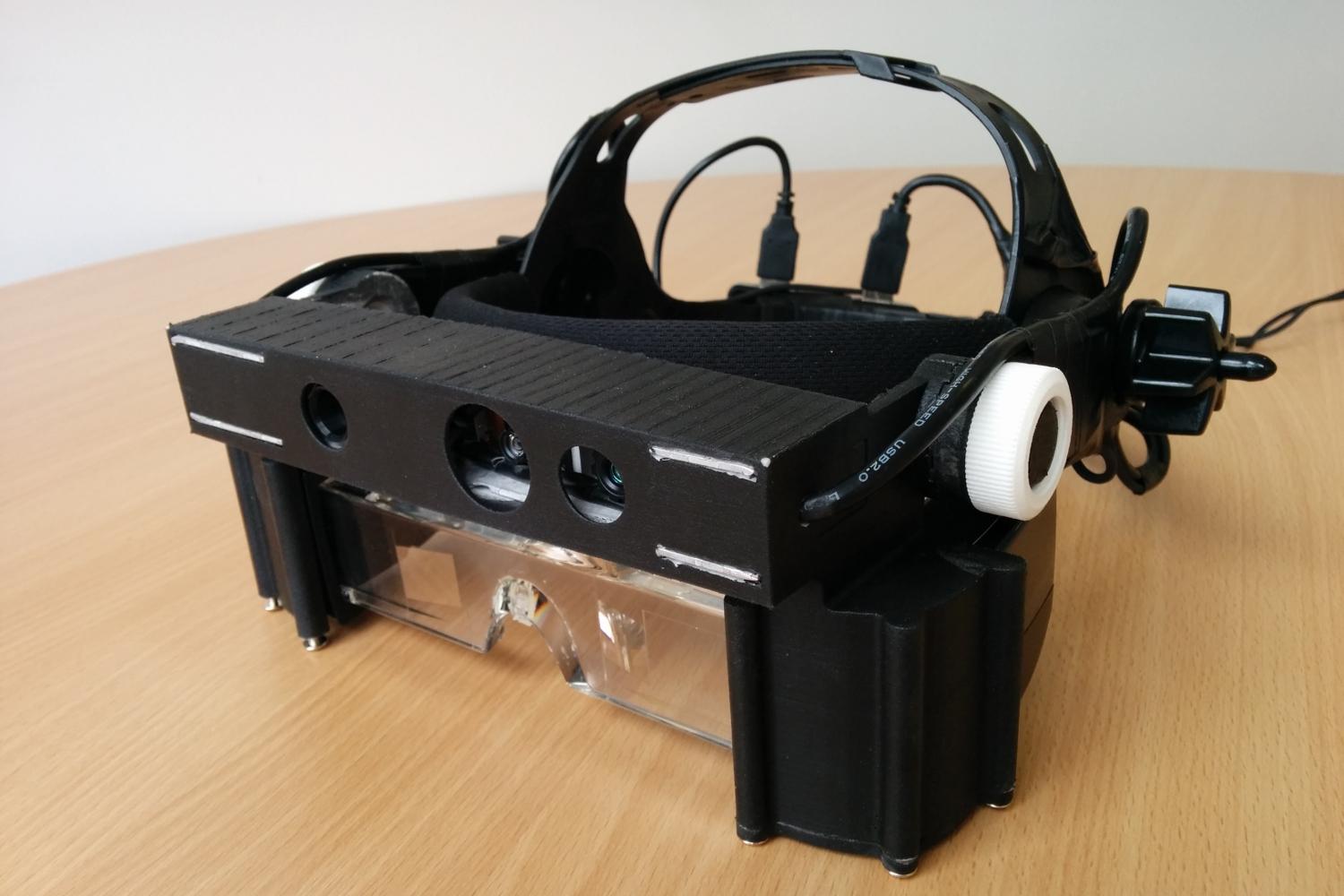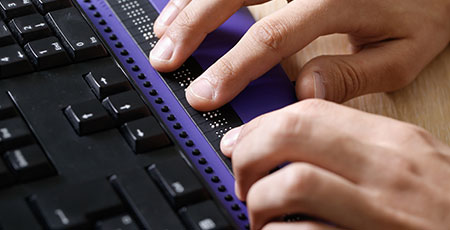Mobility Aids for Visually Impaired Users: Traveling the World with Confidence
Mobility Aids for Visually Impaired Users: Traveling the World with Confidence
Blog Article
Discover Innovative Tools Designed for the Aesthetically Damaged
The development of cutting-edge tools for the aesthetically impaired stands for a substantial advancement in availability and independence. Technologies such as wise glasses with AI abilities and mobile applications made to give auditory summaries are reshaping everyday experiences for customers.
Smart Glasses for Navigation

Smart glasses developed for navigation are reinventing the method visually damaged people engage with their atmosphere. These advanced gadgets make use of a combination of electronic camera innovation, artificial knowledge, and auditory comments to provide real-time information concerning surroundings. By using barrier detection systems, clever glasses can notify individuals to potential risks, making it possible for more secure movement in both acquainted and unknown setups.
The combination of GPS technology even more boosts navigating capacities, allowing customers to receive auditory directions as they relocate. This hands-free strategy not only promotes independence yet also equips visually impaired people to browse city landscapes with raised confidence. In addition, numerous wise glasses are geared up with features that determine spots and road indicators, giving contextual info that boosts the user experience.
In addition, the advancement of these gadgets is consistently advancing, with companies functioning to enhance the accuracy of object acknowledgment and increase the series of navigational features. As smart glasses come to be a lot more easily accessible and affordable, they hold the potential to considerably transform life for aesthetically damaged individuals. Eventually, these innovative devices represent an important step towards inclusivity, offering improved movement and a better sense of freedom for individuals navigating the world around them.

Mobile Application for Daily Living
Just how can mobile applications boost the day-to-day lives of visually impaired individuals? Mobile apps are changing the way visually impaired individuals browse their atmospheres, handle daily tasks, and accessibility information. These applications supply vital support via various capabilities, fostering freedom and enhancing lifestyle.
Numerous innovative mobile apps are created especially for everyday living. Applications like Be My Eyes link aesthetically damaged customers with sighted volunteers by means of video phone calls, permitting them to obtain real-time assistance with tasks such as reviewing labels or browsing unfamiliar areas. Seeing AI, created by Microsoft, uses fabricated intelligence to define environments, checked out text, and identify items, successfully transforming a smart device into a powerful device for everyday aid.
Furthermore, navigation apps tailored for the aesthetically damaged, such as Aira and BlindSquare, offer audio-based directions and ecological information, allowing users to traverse their environments safely and with confidence. Past navigating and prompt assistance, mobile applications also support organization and job monitoring, with functions that aid individuals establish suggestions, produce order of business, and track appointments. In summary, mobile applications act as essential resources, empowering aesthetically impaired people to lead even more independent and satisfying lives.
Wearable Technologies for Support
Empowerment via innovation is increasingly obvious in the realm of wearable tools developed to help visually impaired people. These cutting-edge devices incorporate perfectly into every day life, improving navigation and providing vital comments to customers. For instance, smart glasses equipped with cameras can read and identify faces text out loud, enabling users to connect more confidently in social and expert setups.
Another noteworthy development best site is making use of haptic comments systems in wearable gadgets. These systems make use of resonances or various other responsive signals to communicate information concerning the user's environment, such as barriers or changes in surface, improving movement and security. Wearable modern technologies additionally consist of wristbands that connect to mobile phones, alerting users to notices through subtle her explanation resonances, hence boosting connectivity without dependence on visual signs.
As these technologies continue to evolve, they are not just enhancing self-reliance for visually impaired people but additionally promoting a greater sense of incorporation in society. By bridging the space between challenges encountered in day-to-day living and the potential for freedom, wearable innovations act as critical devices in the mission for equal rights and empowerment for those with visual impairments.
Audio Description Tools
Audio description devices play an important duty in enhancing accessibility for visually damaged individuals, supplying them with the ability to involve with visual media. Smart glasses for the visually impaired. These tools supply narrated descriptions of vital aesthetic aspects in movies, television shows, and live performances, making sure that individuals can fully comprehend the context and emotions shared via visuals
Sound summary can be incorporated right into various systems, consisting of streaming solutions, movie theater screenings, and live cinema. Many preferred streaming solutions now consist of audio summary as an ease of access function, permitting viewers to select it conveniently. Along with mainstream media, specialized applications also exist, supplying audio descriptions for art exhibitions, galleries, and various other cultural occasions.
The performance of audio description pivots on the ability of the storytellers, who have to communicate visual details succinctly without taking away from the initial sound. Advancements in this area are also leading the way for more individualized experiences, where individuals can change the level of detail and pacing according to their choices.
Braille Innovations and Tools
Braille technologies and tools have significantly changed the method visually impaired people communicate with text and details. Modern advancements have led to the growth of functional tools that enhance literacy and self-reliance amongst individuals.
Additionally, mobile Braille notetakers incorporate conventional Braille input with contemporary functionalities, facilitating note-taking, scheduling, and document editing and enhancing on the go. Smart glasses for the visually impaired. These compact devices frequently feature text-to-speech abilities, connecting the gap in between Braille and auditory details
In addition, cutting-edge Braille printers have emerged, allowing individuals to produce Braille labels, records, and instructional products successfully. This access cultivates better involvement in professional and instructional environments, ultimately promoting inclusivity.
Furthermore, study into wise Braille modern technologies continues to increase. Devices that incorporate expert system are being discovered to supply real-time navigating assistance and contextual information, enhancing the customer experience in varied setups. In general, these developments show a commitment to great site equipping aesthetically impaired individuals through innovation, guaranteeing they can easily accessibility and engage with the globe around them.

Conclusion
The development of cutting-edge devices for the visually impaired dramatically boosts self-reliance and top quality of life. These modern technologies not just foster better incorporation however additionally promote autonomy in daily activities, eventually contributing to a much more fair and available society for aesthetically damaged individuals.
As clever glasses come to be a lot more budget-friendly and available, they hold the potential to dramatically transform daily life for visually damaged users. Mobile applications are transforming the way aesthetically impaired individuals navigate their environments, take care of day-to-day tasks, and gain access to information. Apps like Be My Eyes attach aesthetically damaged customers with sighted volunteers by means of video clip phone calls, permitting them to get real-time help with jobs such as reviewing tags or browsing strange spaces.In addition, navigation apps tailored for the visually impaired, such as Aira and BlindSquare, offer audio-based directions and ecological info, enabling customers to traverse their environments safely and confidently.The advancement of innovative tools for the aesthetically impaired dramatically enhances freedom and top quality of life.
Report this page